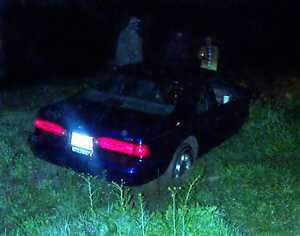Flashing Satellites
Posted On June 3, 1998
I have recently had two different but equally intriguing experiences with objects flashing in the night sky. In the first instance I was observing alone at Anza. In the second I was observing with hundreds of other amateur astronomers at the Riverside Telescope Makers Conference.
At the May Anza star party (which was pretty much a cloud out) a new member and friend came to the site after dark and got her car stuck in the ditch between Dave Hobb's Observatory and Jupiter Ridge. She was in up to her frame. It took almost five hours to get a AAA Club tow truck to the site to get her out. At 1:45 A.M. (Sunday May 26), I waited at the intersection of Elder Creek Rd. and Bonnie Lane for the long overdue tow truck. Trying to stay warm and not think about the unknown large creature growling in angry low tones in the overgrowth across the road, I did some naked-eye observing.
I was admiring Coma Bernices high in the west (about 55 degrees altitude) when all of a sudden a zero magnitude star appeared about five degrees to the north of the "cluster". It did not move and disappeared after about one second. About five seconds later it appeared again, zero magnitude in the same position, not moving. It disappeared about one second later. Then about six or seven seconds later it reappeared at the same position, but this time at third magnitude. The looping animation to the left gives a fair simulation of what I saw. What do you think it was?
Consensus opinion is that it was a GPS satellite going through an attitude change. If it were a "normal" satellite it would have shown movement. It didn't. it wasn't a geo-stationary satellite as those are found in the southwest at about 45 degrees altitude. The slow 17 hour orbit of the GPS satellites would fit the bill for what I observed. Additionally, the GPS satellites are large, which would account for the zero magnitude flash. If you have another theory as to what I saw, please send me a note at sipe@sipe.com .
Iridium Flashers
Among the more memorable observing events at this year's RTMC were the Iridium flashing satellites. See the feature article on Iridium Flares for details. These objects are going to be regular companions during our observing sessions from now on. Since they can get as bright as -8 magnitude, they also provide a means of introducing the night sky to curious non-astronomers who will be wondering what they heck they saw in the night sky. I would like to include a bulletin page on the OCA web site that tells what bright Iridium flashers are expected at each star party. If someone would be willing to gather than information, I will post it on the site. See the feature article for more details.

